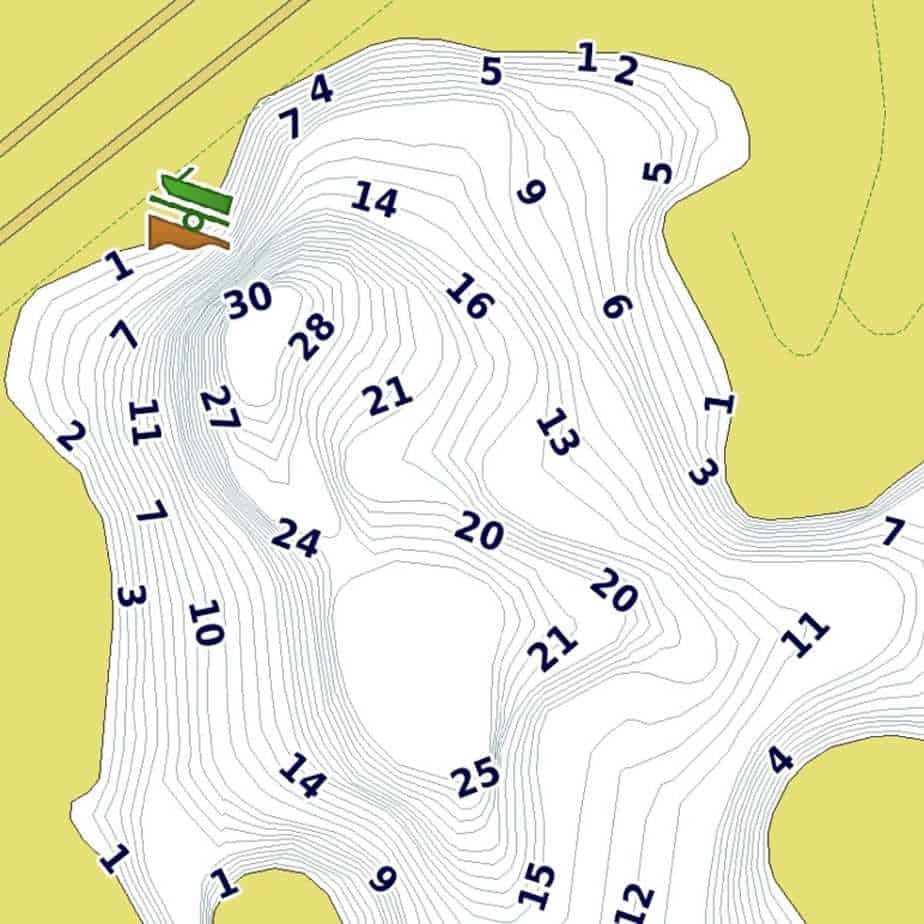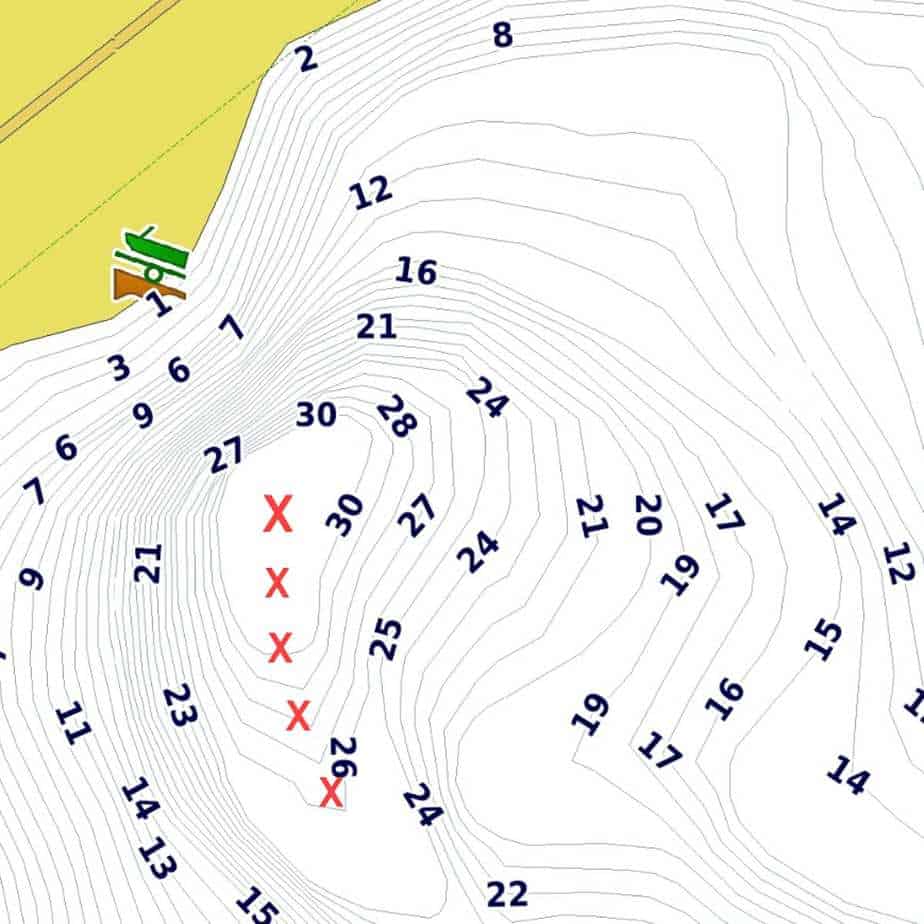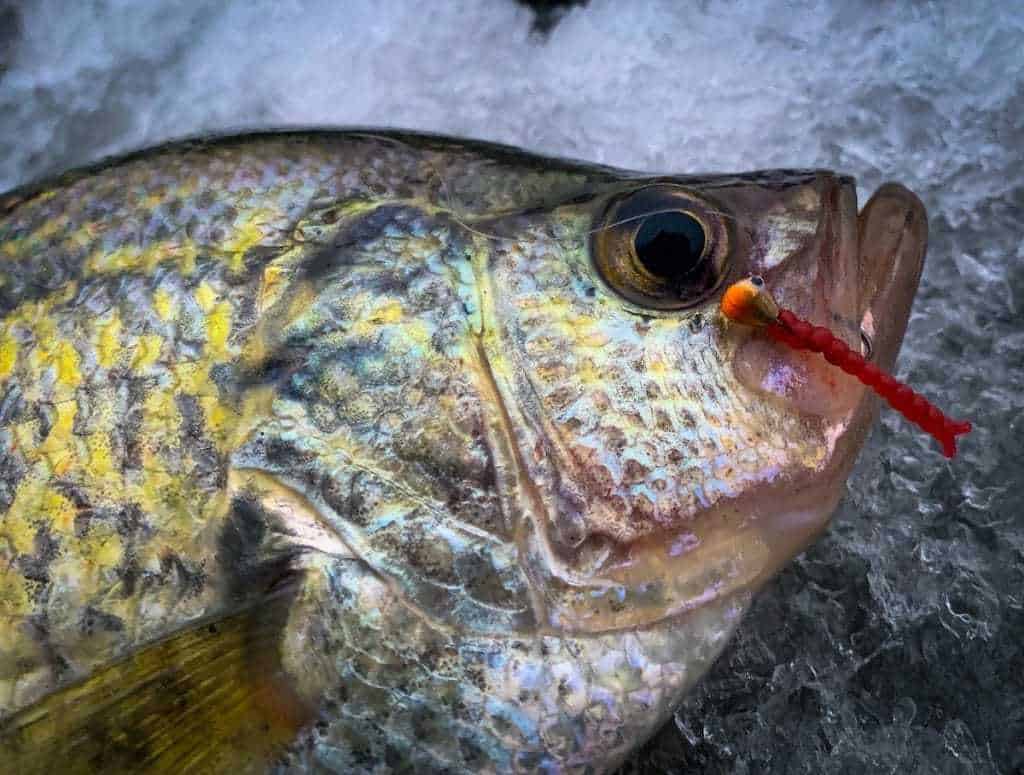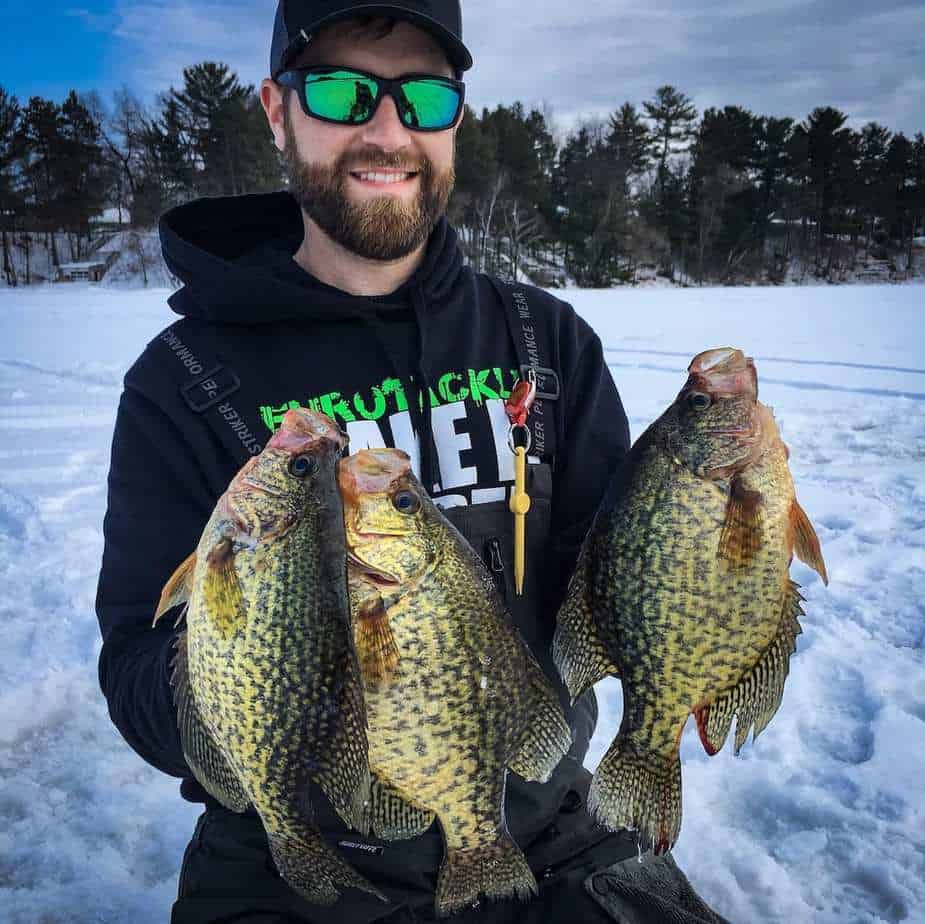Panfish, and basin crappie in particular, are some of the most targeted species throughout the hard water season.
Ice Fishing Basin Crappies
In general, crappies are a relatively nomadic species and can be found across countless types of structure throughout a body of water. This includes weeds, wood, rocks, and basins to name a few. Perhaps the most consistent bite throughout the winter months occurs in the main basin of lake. In fishing terms, a basin is the deepest, relatively featureless portion of lake.

A typical fall will drive schools of crappies from their summer haunts to the basin of the lake, where fish can be found suspended throughout the water column. Predictable depths for winter basin crappies range from approximately 20-40 feet of water. However, crappies can be found at depths much shallower or deeper.
Most relatively small, natural lakes share a similar pattern, so replicating results can become increasingly easier. These patterns and techniques related to winter crappies can also apply to flowages and impoundments, although they may not prove to be as consistent.

Using a handheld GPS, I start my search in the deepest portion of any main lake basin. My first hole is typically in the center of the basin and work my way towards the edge of the hole. On an average day I will drill around 20-30 holes before I start looking for fish.
If you’re fishing a heavily pressured lake with a lot of fishing traffic, I would recommend starting the search on the least populated portion of the basin. I personally won’t venture within 100 yards, give or take, of the closest shack.
Prior to actually wetting a line, rely on your electronics to determine if fish are present in the vicinity. Swing the transducer back and forth across the hole to see if fish are nearby. This can also help determine which hole you should proceed to next. Travel hole-to-hole until you start marking fish. If you’re not marking fish, keep drilling. It’s not uncommon for anglers to drill more than 100 holes in search of active fish.
Presentation is key to success on the ice. Tungsten jigs in the 3-5 mm category excel in situations involving deep water crappies. Micro plastics are absolutely king when it comes to basin crappies, in my opinion. My personal favorites include the Eurogrub, Bloodworm, and Y-Fry from Eurotackle. Their soft composition has a knack for duping finicky fish.

Recommendations for fishing with plastics: (1) Pair the plastics with appropriately sized jigs. (2) Fish the plastic as designed. If it’s meant to be fished horizontally, then ensure the lure remains horizontal. If necessary, rotate the knot on the hook so the entire setup remains perpendicular to your line. (3) Have confidence. Confidence is king when fishing artificial lures.
Rods & reels are often overlooked when it comes to ice and especially for panfish – but having a quality set up is just as vital on the hard water as it is on the soft water. Opt for something sensitive enough to feel and see the lightest bites, yet stout enough to drive the hook home in deep water.
St. Croix Rods CCI (Croix Custom Ice) lineup provides a series of technique-specific rods for any angler. The CCI Pan Dancer and Tungsten Tamer are top choices for fishing lead and tungsten jig combination. The CCI Micro Spoon is an excellent tool for smaller panfish spoons and jigs. Rods in the 28 inch to 32-inch category are perfect for fishing both inside and outside of a fish house.
Reels should be appropriately sized to balance well with a specific rod choice. High-quality drag functions are also necessary for cold climates. Spinning reels will certainly get the job done, however, inline reels can also offer some advantages when targeting finicky panfish. These types of reels are specifically designed to prevent line twist, which won’t result in a jig spinning in circles 25 feet below the surface.
From a conservation perspective, it is vital to be cognizant of the depths you are fishing in. Pulling fish from depths of greater than 20 feet can result in barotrauma. Barotrauma incidents are likely to be fatal to the fish. Even though a fish swims away, that doesn’t mean it’ll necessarily survive. If you’re fishing in deeper water, plan to keep some fish for a meal.
Rely on the tools available, drill some holes, offer the right presentation for the situation, and you’ll be sure to put some fish topside this winter.
Blake Tollefson
218-269- 8486
blake.tollefson@gmail.com
Facebook: https://www.facebook.com/btollefsonfishing
Instagram: @btollefsonfishing
[/et_pb_text][adsanity_divi_random_ad _builder_version=”4.13.1″ _module_preset=”default” global_colors_info=”{}”][adsanity_divi_ad_group_item _builder_version=”4.13.1″ _module_preset=”default” adsanity_group=”2049″ sticky_enabled=”0″ _i=”0″ _address=”0.0.0.1.0″ /][/adsanity_divi_random_ad][/et_pb_column][/et_pb_row][/et_pb_section]










